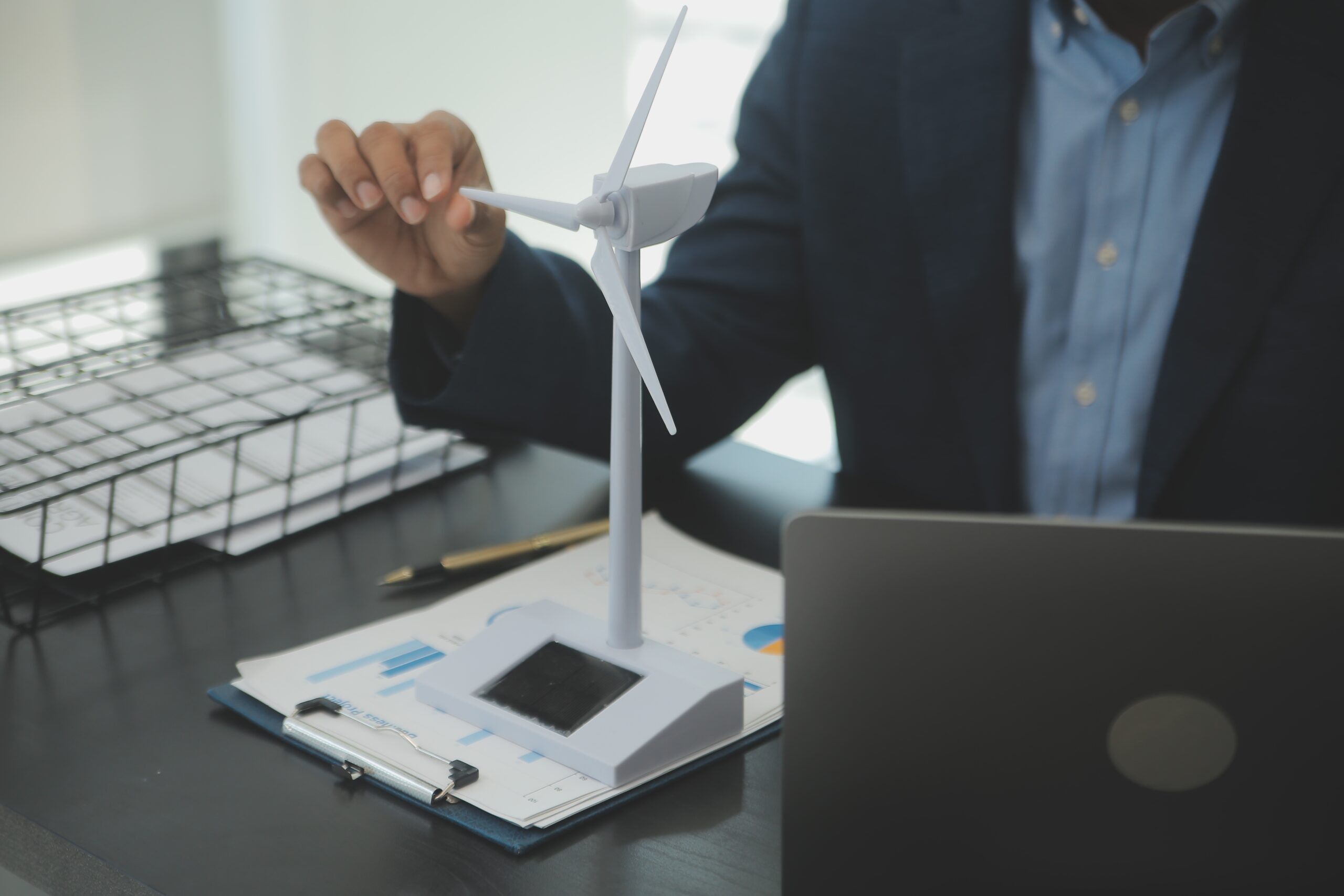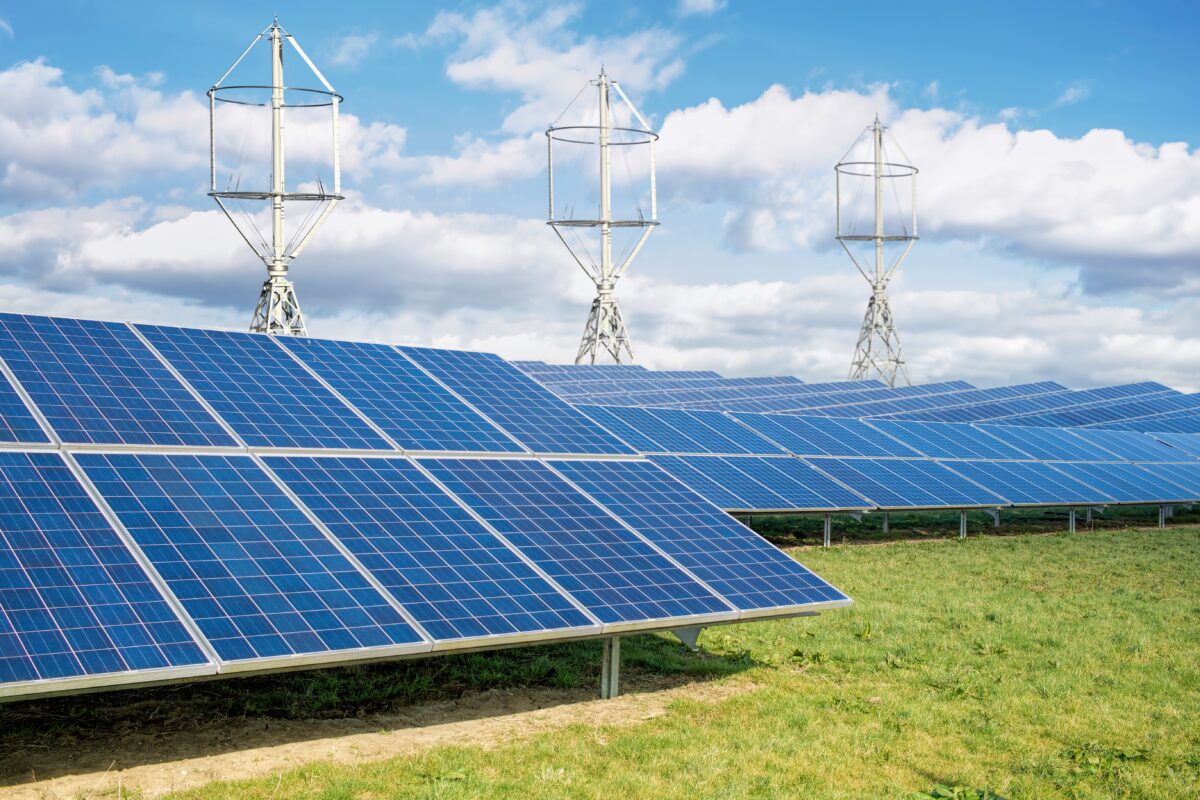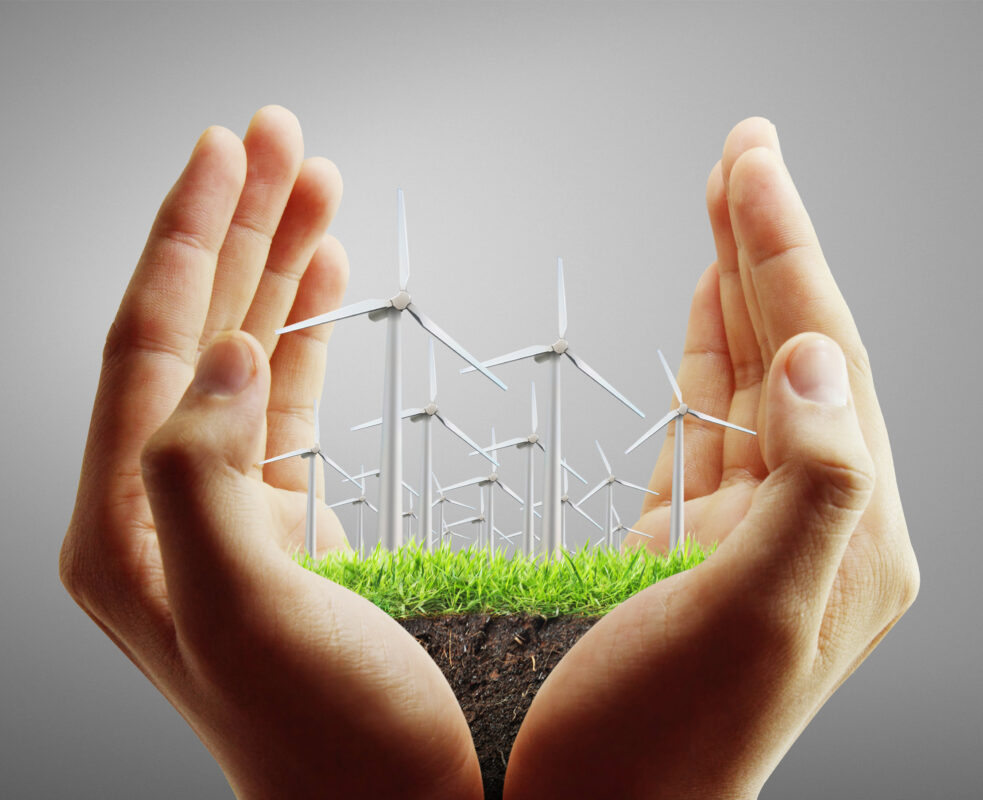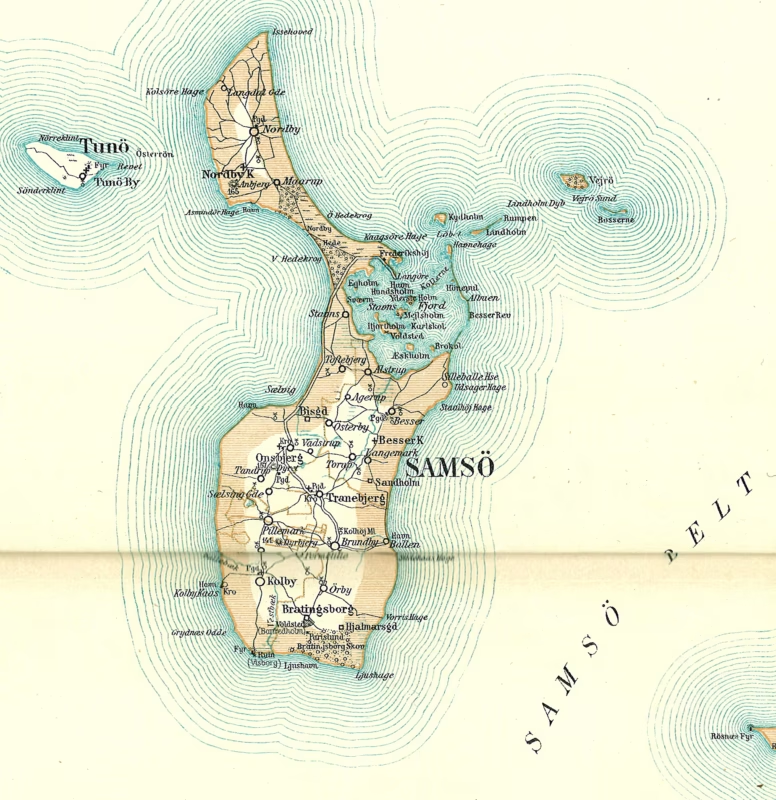Are you interested in renewable energy sources and wind turbines, but you find it hard to get reliable, but also easy to comprehend information? In this article, we will explain the most important matters of wind energy: how it can be used to generate power and who can benefit the most from wind turbine technology.
Introduction: who is this guide for?
This guide focuses on providing basic information about wind turbines and renewable energy sources. It will be perfect for you if you consider investing in wind energy and have some questions or doubts.
It’s also worth reading if you wish to know the subject of renewable energy better. We will show you the role of wind energy in global shift towards using clean sources instead of fossil fuels and main benefits for individual and business users of wind turbines.
Understanding wind energy
What is wind energy?
Natural movements of the air, from the areas with higher pressure to the ones with lower pressure, generate some kind of mechanical energy. This is what we call wind energy. But to make it useful for household, businesses and industry as an electric power, it needs to be transformed. And this is what happens in wind turbines – thanks to their blades, rotors and other components.
It shouldn’t surprise anyone that the frequency and strength of wind affects the process of generating power. That’s why wind farms locations should be chosen carefully and after prior research. What weather conditions ensure the required efficiency of a wind farm? Small wind turbines don’t require much – for our products the minimum wind speed is 2,5-3,3 m/s, depending on the device’s model. They reach the highest capacity when the wind speed is between 10 and 15 m/s.
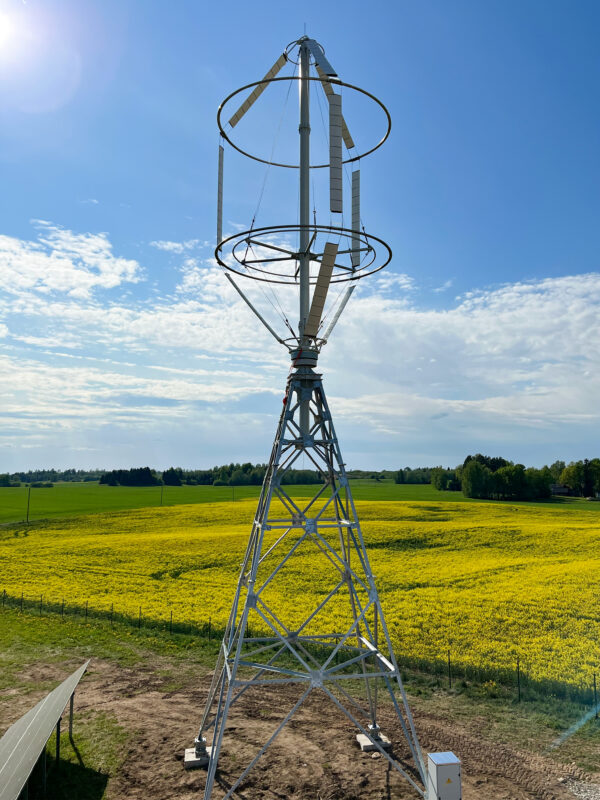
Renewable energy sources vs. fossil fuels
The main difference between wind power and conventional systems is that generating energy from the wind doesn’t require using fossil fuels: natural gas, oil or coal. This is one of the main advantages of this technology. Limiting the use of fossil fuels means:
– easy access to clean energy also for the areas where fossil fuels are not extracted;
– no costs of transporting the energy sources to a plant;
– no greenhouse gases emissions;
– no risk of running the sources out – wind energy is always available and this will not change over the years.
The environmental and economic impact of energy transition is so strong that there are plans to replace fossil fuels with renewable energy sources globally until 2050. There is still a lot to be made to achieve this goal but some symptoms are already visible: the share of renewable energy in the total power generation reached 29,7% in 2022.
Components of small wind turbines
Generating power from wind would not be possible without key components of wind turbines, which are:
Blades – long elements, usually made of fibreglass. When the wind blows, they start to spin around, capturing wind energy. Freen turbines use soft balades technology and our blades are made of metal.
Rotor – it’s a device placed in the center of the wind turbine, where the blades connect. It’s moved by rotating blades.
Shaft – a metal rod connected to the rotor, responsible for passing the energy to other elements of the system.
Generator – a device where mechanical energy is transformed into electricity.
Tower – an element of average height between 12 and 120 metres, to which blades, rotor and other parts of a wind turbine are connected.
How does the process of generating electric power in a wind turbine look like? We explain it in details in the paragraph “How small turbines work” – see below.
The basic construction and mode of operation of a wind turbine remains, except for some minor differences, the same. But it doesn’t mean the technology is not changing. It’s the opposite – the scientists and commercial R&D departments work on increasing efficiency of wind turbines and reducing the costs of their maintenance.
Ready to take the next step toward a cleaner, more sustainable energy solution for your business? Schedule a free consultation to explore how small wind turbines can help you meet your sustainability goals.
Types of small wind turbines
Horizontal wind turbines, looking like a big fan, are the most popular solution. But not the only one possible! Check how horizontal and vertical axis wind turbines are constructed and how they work.
Horizontal axis wind turbines (HAWTs)
This kind of wind turbines has three blades, connected to a rotor with a shaft that is parallel to the ground. The wind blows directly to the blades, making them move. Horizontal axis wind turbines are known for their high efficiency. They are popular mostly in large wind farms, but smaller models can also be used for household needs.
Vertical axis wind turbines (VAWTs)
Home vertical axis wind turbines have characteristic blades in a shape that can be compared to an eggbeater. Their rotor and shaft are placed centrally, perpendicular to the ground. The blades rotate when they are moved by the wind, and they don’t require calibration or reorientation when the direction of the wind changes. This kind of wind turbines can be successfully used in places with limited space, for example in urban areas.
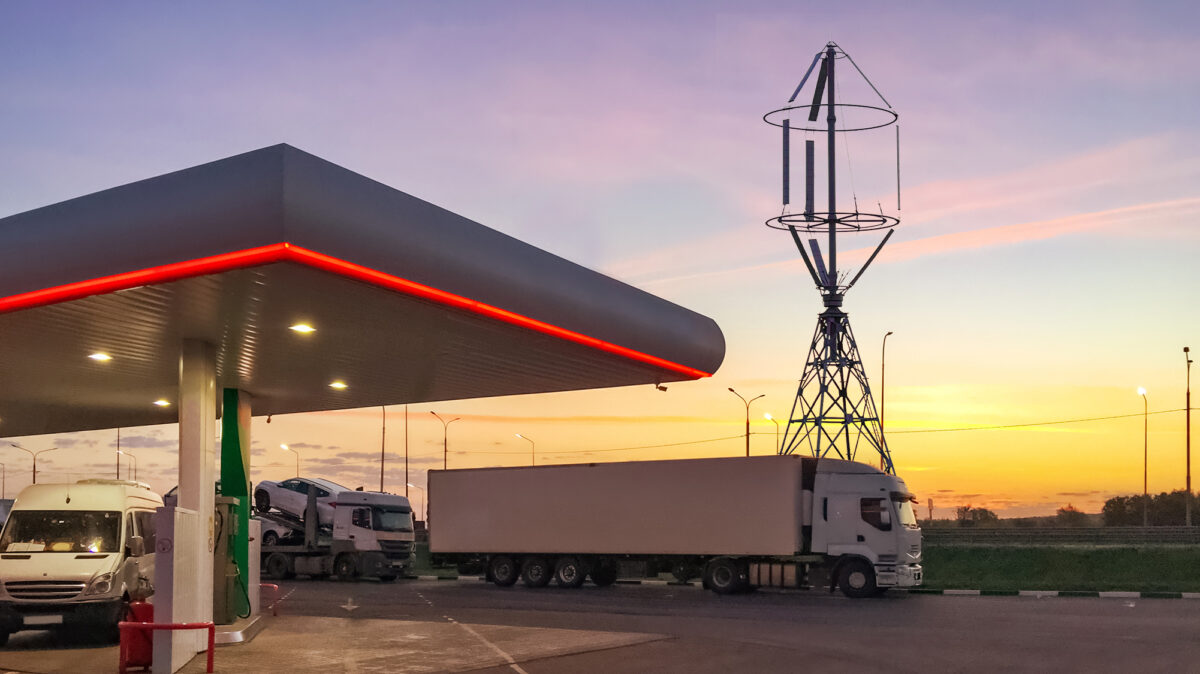
How small wind turbines work
The mode of operation of the small wind turbines is pretty much the same as in the large systems. The energy of the wind is captured by the turbine’s blades and then is passed on to the rotor. Spinning blades make the rotor move. When it rotates, it starts moving the shaft, which carries the motion into the generator – the part that transforms mechanical energy into electricity. The generator consists of magnets and coils of wire that create an electric field. In simple words, it’s pretty much the same that what happens when you move the pedals of a bicycle in order to generate power to power a bulb in a bike light. The difference is the scale of this process – the generator creates much more electric power.
Benefits of small wind turbines for businesses
Businesses, no matter if small or big ones, can benefit a lot from investing in wind energy. The benefits are both economic and reputational. Using wind energy as a power source is a sign of innovative thinking and ecological awareness. Check what advantages of small wind turbines are the most important in business cases!
Reducing carbon footprint
As small wind turbines don’t emit any greenhouse gases while generating power, can we say that they are 100% carbon-footprint free? The answer is not that simple. The carbon footprint of a wind turbine does exist – and it results mainly from the manufacturing, transporting and installing processes.
The wind energy footprint in the whole lifecycle of a turbine is not, however, high. For our products it’s just about 25 g of CO2 per each 1 kWh of energy. For a comparison: the same amount of energy generated from burning coal is responsible for emitting 1002 g of CO2.
How long does it take for small wind turbines to become carbon-neutral? Check this and other facts about their contribution to sustainability.
Enhancing sustainability goals
Focusing on sustainability is becoming a priority in business of different business: IT, industry, healthcare etc. And it’s not only about marketing and building positive reputation – although, investing in green energy sources can increase sales among ecologically-aware customers. It’s also about politics and meeting new law regulations. We may expect that governments of highly-developed countries will introduce regulation that will somehow “force” businesses to follow the sustainability goals. A good example are regulations that impose limiting greenhouse gases emissions by industry.
Business opportunities
Business investors can benefit from wind energy not only by powering their manufacturing plants or data centres. Renewable sources-based energy can be sold on a commercial basis – for other businesses or for local communities. Learn more about small wind technologies as a business opportunity.
Small wind turbines in industrial applications
Wind energy supporting industry evokes associations with large systems, with capacity counted in megawatts. But are the large wind turbines the only possible solution in industrial applications?
Small industrial wind turbines can be an efficient support in this case as well. All depends on the capacity of the whole system, not a single wind turbine. Wind energy systems are scalable – they can be built with just one wind turbine or even hundreds of them. The scalability is an advantage also in cases when an industry company has plans for expansions – every wind energy system can be expanded to meet current needs.
Integrating small wind turbines into your business
Assessing feasibility
Every wind energy system is efficient enough only when it meets the users’ needs. How to assess feasibility and profitability of investing in small wind turbines?
The main factor is energy demand of a company. Basing on this data, we can assume what kind of wind turbine will be efficient enough to provide electricity needed to power the company. We also ask investors to consider and answer the following questions:
– what budget they have to invest – and if they are aware that initial costs are the main part of the investment;
– if they plan to use the energy from wind by themselves, or sell it for commercial or municipal use;
– if they own a place where a vertical axis wind turbine can be located – and if not, if they are willing to rent or purchase one;
– what time of return on investment will be satisfying for them;
– are they planning to expand the system in the future.
Interested in discovering how small wind turbines can benefit your operations? Contact us today to schedule a free feasibility study.
Overcoming common misconceptions
Using renewable energy sources to generate electric power is quite a new concept. And it’s natural that it may cause doubts and objections. If they are not properly taken care of and dispelled, they may transform into some myths. The main problem is, that such beliefs and unsubstantiated opinions spread very easily in our internet’s era. The vast majority of them is untrue – but to convince the public opinion about it, we need clear, comprehensive and reliable data and information.
Here are some misconceptions and myths associated with wind energy that can be easily overcome:
1.Generating power from wind energy is expensive.
The fact is that wind farms generate quite high initial costs, associated with purchasing devices, transporting and installing them. But, to get a full picture of the costs, we need to take into account also the expenses at the operational period. An objective factor to show the real costs and compare them with the costs of another systems is LCOE (average levelised cost of electricity). For newly installed big wind energy system it’s 0,081 $ per 1 kWh (in 2022).
2.Wind turbines are harmful for wildlife.
Experts in wind power agree that these devices are not totally neutral for animals, especially birds and bats, but also insects. It’s been calculated that in the USA wind power is responsible for the death of 0,27 bird per each 1 GWh. The problem occurs when wind farms are located in animals habitats or their migration routes. It can be easily solved by prior checking the location of wind turbines and choosing the one that is safe for wildlife. Placing wind turbines with a proper distance between them and using appropriately high towers are also good solutions.
3.Wind turbines generate noise that can be annoying and harmful for people living nearby.
The truth is that the noise generated by an average wind turbine is about 45 dB. This is much less than the traffic noise.
4.Using wind energy to generate power is possible only in few areas.
Appropriate location is crucial for wind farm’s efficiency. But there are many areas that meet the conditions for wind turbines. As we mentioned before, the wind speed required for power generation is just 3,5 m/s. If the area is not sheltered from the wind or densely developed, capturing enough wind energy shouldn’t be a problem for most turbines.
5.Wind turbines are suitable only for big businesses and industry, not for individual users.
It all depends on fitting a wind turbine to the user’s needs. There are many solutions available on the market – from small wind turbines (like Freen vertical axis wind turbines with power of 5, 20 or 50 kW) to large devices, suitable for wind farms. Wind power can support households, industry, agriculture etc.
Conclusion
Benefits of wind energy are not limited only to environmental or economic ones. We should look at this matter as a piece of a bigger picture. Energy transition from fossil fuels-based systems into renewable energy sources-based system is also happening. Being a part of it is definitely worth considering – also because investing in wind energy has become less expensive and much easier within the last years.


